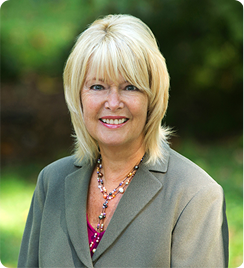
Think of times when you really wanted something but discovered you lacked the preparation for it. This month while hiking in Croatia, I found myself in that situation. I had dreamed of coastlines and sun, great seafood and interesting companionship, new vistas and learning.
While I experienced all that, I also received a huge wake up call. My training fell short of what was needed to thoroughly enjoy the adventure. Instead, I labored up the inclines and stepped gingerly over the rocks. My attention was on my safety versus the view. I was surprised by this peculiar experience. Previous hiking situations were manageable. What was different this time? What do I need to change?
So my wake up call pertains to conditioning and health. Other wake up calls may reflect work or relationships. They catch your attention and bring you up short. But do they really need to surprise you so much? What initial signs are you ignoring? What short cuts are you taking?
What keeps you in a job that no longer fits or a relationship that is broken? A wake up experience can hit you in the face and prevent you from hiding in the dark. You can’t make excuses and push things under the rug anymore. It’s time to address what is standing in your way of happiness, success, or accomplishment.
These tipping points serve to force a choice. Either you address the problem or you change your vision. Facing the fact that your success requires more work and/or knowledge leads you closer to your dreams. Giving up because it’s difficult results in disappointment and shame.
I didn’t give up. I kept going, even though it wasn’t pretty, even though I was the last in line. But perhaps if I had prepared harder before, my vacation would have been easier and more enjoyable.
Marion is extremely unhappy in her job. She dreams of more responsibility, meaning, and autonomy. Her efforts to find new work are falling flat. She’s unsure what else to do. She’s angry and frustrated and, if truth be told, wants something fantastic to fall into her lap. Rarely does that happen in real life.
Instead the breaks come after a great deal of hard work and preparation. Marion can feel a victim or become empowered to take action to make something happen for herself. She can acquire relevant skills, get more experience through volunteering, network aggressively in her field, and/or hire a professional guide.
On one day during my hiking trip I had a personal “sherpa guide” Jasna to help me over the rough spots. We laughed and joked and became acquainted. It made the path much easier and fun for me.
A wake up call allows you to take action to get back in control. When you establish a plan to address what is needed and begin working that plan, you become invested. No longer are you hoping for a miracle, but you are helping yourself for today and tomorrow.
The practice you gain through effort teaches you that most things can be solved or attained through learning and hard work. You can achieve your dreams and reach your goals. No matter what your circumstances, fighting for what’s important is the process of creating a well-lived life.
So I took the easy route before my trip and now I’m addressing it with hard work. My fellow travelers gave me a glimpse of what’s possible. Older, fitter hikers gave me hope. If they can do it, I can too. I remarked to one guide Lea that she was very fit. She replied, “If I don’t take care of myself, who will?”
Who will indeed? What dreams do you have that require a plan of action? When will you begin? How hard will you work? What deadlines will you give yourself?
“It’s always a wake up call to get beaten”
Usain Bolt
Steps to take before a wake up call:
Identify your vision
Outline the steps needed to get there
Begin now, prepare yourself
Ask for the support you need
Appauld your progress
Enjoy life and see you on the mountain!














